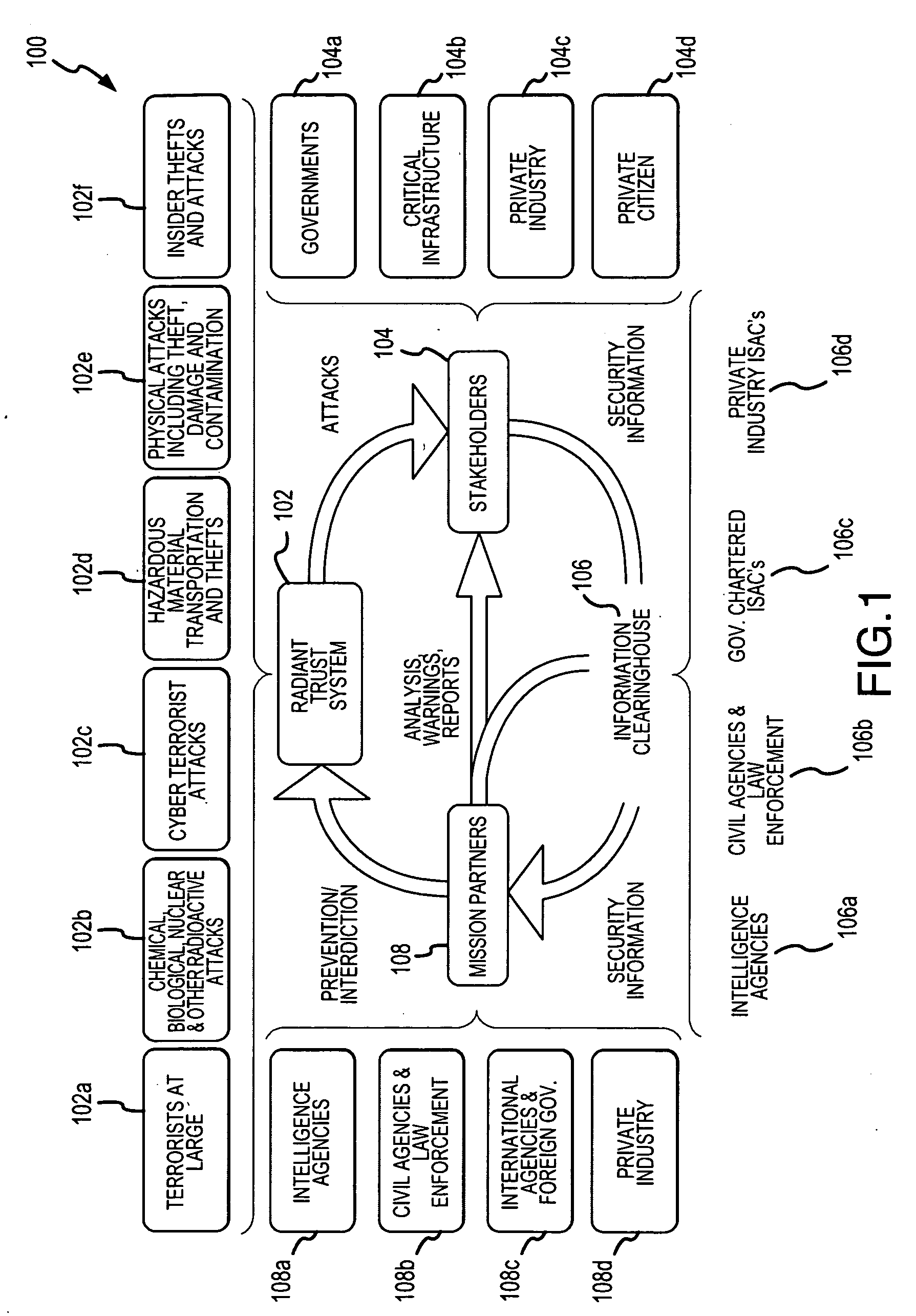Information aggregation, processing and distribution system
a technology of information aggregation and processing, applied in the field of information aggregation, processing and distribution system, to achieve the effect of promoting confidence in the collaborative environment, reducing accuracy, and high level of useful collaboration
- Summary
- Abstract
- Description
- Claims
- Application Information
AI Technical Summary
Benefits of technology
Problems solved by technology
Method used
Image
Examples
Embodiment Construction
[0068]In the following description, the invention is described in the context of a transliteration, sanitization and collaboration system, denoted as the Radiant Trust System, for promoting collaboration among various users in relation to various homeland security and defense applications. These applications include, but are not limited to terrorist tracking, pre-flight passenger screening and border security and multilateral policing activities. Although these represent particularly advantageous application of the present invention, as noted above, the invention is applicable in a variety of contexts including private sector applications, public sector applications and public / private sector applications. Accordingly, the various aspects of the present invention are not limited to the context described in detail below.
[0069]The description below begins with an overview of the Radiant Trust System describing the system architecture and network environments. Thereafter, the two compon...
PUM
 Login to View More
Login to View More Abstract
Description
Claims
Application Information
 Login to View More
Login to View More - R&D
- Intellectual Property
- Life Sciences
- Materials
- Tech Scout
- Unparalleled Data Quality
- Higher Quality Content
- 60% Fewer Hallucinations
Browse by: Latest US Patents, China's latest patents, Technical Efficacy Thesaurus, Application Domain, Technology Topic, Popular Technical Reports.
© 2025 PatSnap. All rights reserved.Legal|Privacy policy|Modern Slavery Act Transparency Statement|Sitemap|About US| Contact US: help@patsnap.com



